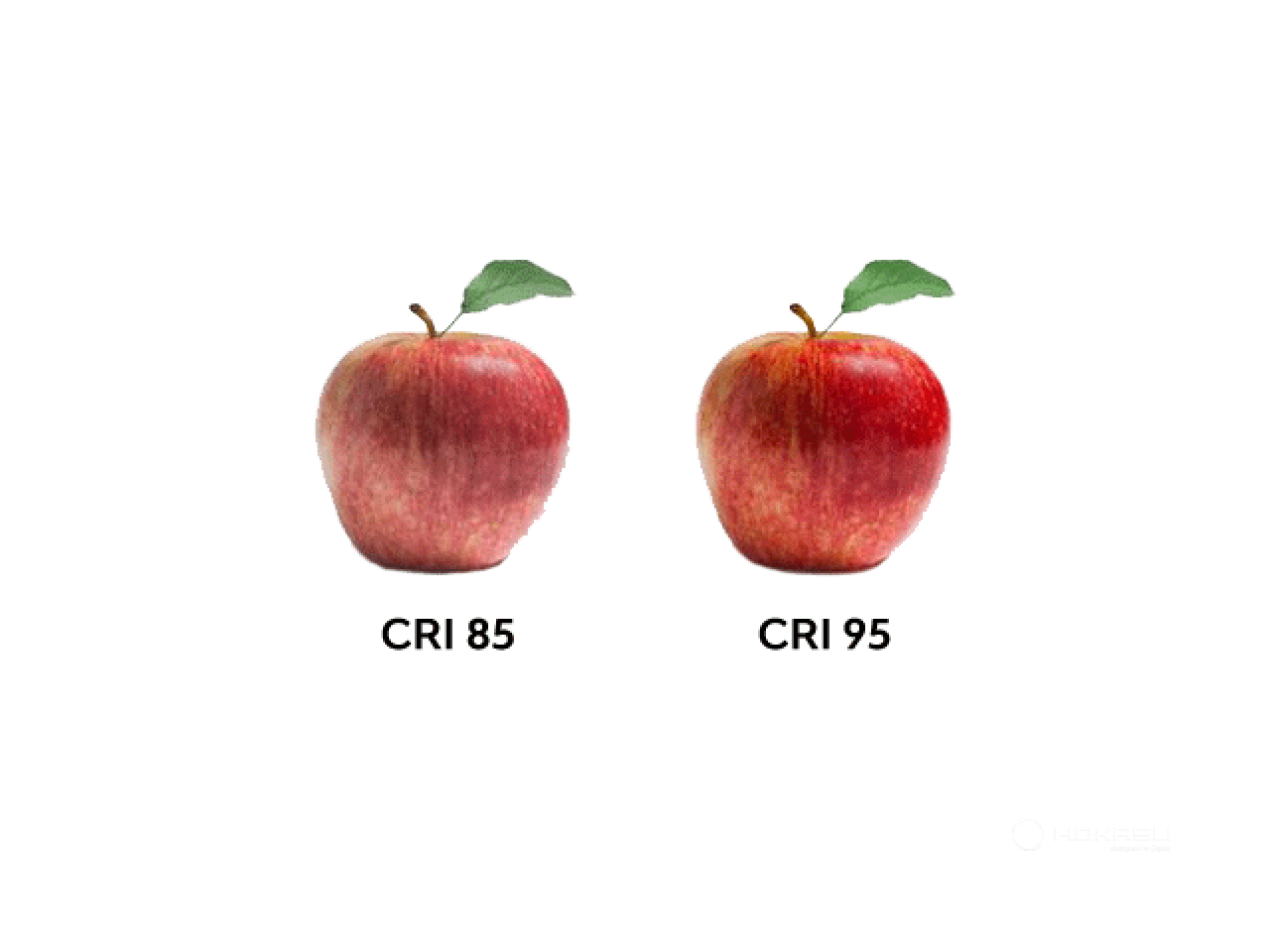Cookies are used for optimal website experience.
Color rendering index (CRI or Ra)
Let's talk about the color rendering index (CRI or Ra): the impact on human health, a comparison of the performance of different products and a list of rooms where high CRI is important - a parameter that largely determines the comfort of working under artificial light.
The color rendering index is a value derived from the ratio of the real color to the visible or apparent color of objects. In other words, it shows how much the colors of objects illuminated by an artificial light source are true. It is referred to as Ra or CRI, short for Color Rendering Index, which literally translates as "Color Rendering Index".

Low CRI values cause eye strain due to the inability to distinguish a significant portion of shades, resulting in discomfort and rapid fatigue. According to studies by Israeli and Italian scientists, light with low color rendering can lead to sleep and wakefulness disorders.
If you use light sources with high CRI>85, your eyesight will be less strained and therefore the level of fatigue will be lower, even the speed of reaction will improve (if we are talking about critical areas of production, for example). The higher the CRI, the better.
Color rendering index measurement
The color rendering index is measured when light sources are developed. To do this, the light source under study is illuminated on a template or calibration table on which the standardized colors R1-R8 are plotted.
Next, the color value is measured with special instruments. This is how you get information about how the colors look under a particular source. The next step is to illuminate the calibration pattern with a reference light source and take readings from the instruments to determine the colors.
After the data are processed according to the CIE methodology and get the deviation of the received colors from the reference.
The colors are denoted as Ri, where i is the color number. Their names are:
- R1 – wilted rose;
- R2 – mustard;
- R3 – Lettuce;
- R4 – light green;
- R5 – turquoise;
- R6 – sky blue;
- R7 – purple aster;
- R8 – Lilac.

The result is a number between 0 and 100. Sunlight has a color rendering index of 100. The lower the value, the worse the colors are reproduced.
The reference is sunlight with a CRI of 100.What is the color rendering of the light sources we use? - compare, CRI:
- LED lights: 60-96
- Halogen bulbs: 70-90
- Standard LED strips: 70-80
- Standard fluorescent lamps: <75
- Sodium discharge lamps: 22
In which rooms a high CRI is important:
- art galleries, studios, private collections and collections;
- children's rooms;
- Luxury clothing stores;
- showroom of interior items and finishes;
- offices or administrative facilities (with long hours of human work).
We recommend choosing light sources with a high CRI>85 (the HOKASU LED module index), which will give you significant benefits: quality light, improved ambient aesthetics and no eye fatigue.
Help in choosing
If you need help or advice in choosing LED light sources, you can contact our experts by phone.
We also look forward to receiving your emails: sale@hokasu.com or messages in online consultant on our website.
We can also do calculation of the light of your project: send your contacts and information about the project to sale@hokasu.com and our manager will contact you!
04.05.2024

